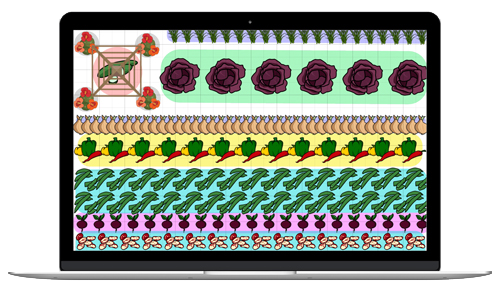Keep the soil moist during the first year by watering weekly. So, do not let the soil dry out. In colder regions, add extra mulch around the plant in late fall to protect the roots. Once the plant is in the ground, don’t disturb or move it.
- In spring, fertilize with a liquid seaweed or fish emulsion. In subsequent years, fertilize with a balanced, all-purpose (5-10-5) fertilizer.
- Each spring spread compost around the plant (away from the stems).
- In spring, prune dead wood back, cutting above new, emerging buds.
- On older plants, remove any stems that are 4 years old or older.
Pruning Clematis
Prune clematis to promote flowering. There are three different kinds of clematis, and you need to determine which kind you have before you prune. Woody-stemmed types like the Clematis Montana bloom early on last year’s stems. Prune plants after flowering to remove deadwood. Clematises belong to one of three groups based on flower size and bloom time.
Group 1: Woody-stemmed types bloom on last year’s stems. Flowers appear in early to mid-spring. Prune after flowering, if desired, to remove deadwood. Examples include: C. armandii, C. alpine, C. cirrhosis, C. macropetula, and C. montana.
Group 2: Double and semidouble flowers should also be pruned as above. They may bloom twice: in May/June on last year’s wood and later in the year on new shoots. But prune after spring flowers fade; remove dead wood in late winter. Examples include hybrids: ‘Miss Bateman’, Lake Sondesborough’, ‘Nelly Moser’, ‘Henry’, ‘Marie Boisselot’, and ‘Elsa Spath’.
Group 3: Large, showy flowers that bloom in summer and autumn are on current year’s growth. Prune severely in late winter/early spring, leaving two pairs of buds on each stem. Common varieties include C. viticella, C. recta, and C. x jackmanii.
See our complete post on pruning your clematis.
Propagating Clematis
Seed, softwood cuttings, and division are three ways to propagate clematis.
By seed, we mean saving seeds in the fall once they’re ripe. Clematis seeds need a cold period, as they would outdoors in nature. Store in the fridge for a few months. Then, once the temperature is 70 degrees, plant directly in the ground. Or, plant in small pots in moist media under bright light until the seeds germinate. Once the seedlings germinate and are big enough to handle, transplant them into 4-inch pots or the ground after hardening off (gradually introducing them to the outdoors).
Cuttings are the most common way to propagate. Choose a healthy shoot in late spring to early summer; it must be 2 to 3 inches long and include a fresh bud. Cut the stem at an angle above a set of leaves, then dip the end in rooting hormone and plant it into a small pot in soil. Keep leaves on. Water and place in indirect sunlight. Provide humidity by putting a plastic bag over cuttings, and also provide bottom heat of 55 to 60° F. Once your cutting has rooted, plant it in 4-inch pots or outside.
Dividing clematis is easy if you already have a large, established plant. Gently break up the roots, then place your divided plants back in the ground, as you would with any new plant.












